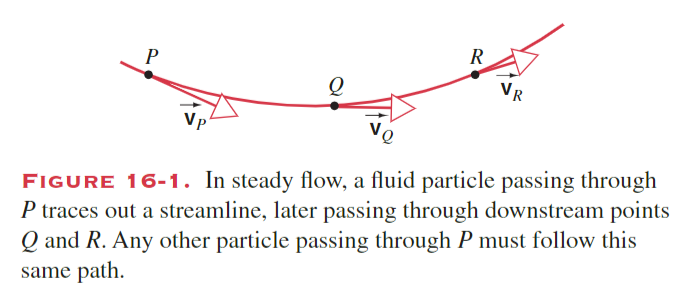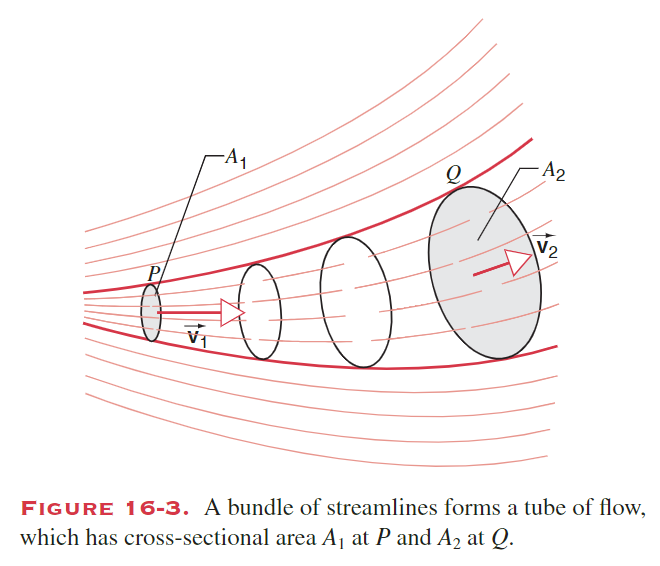Streamlines
In steady flow, the velocity

- The magnitude of the velocity vector
is always tangential to the streamline. - No two streamlines can cross each other. Otherwise, fluid particles may have a choice on whether to go on one path or another path, meaning that it would not be fixed.
- In principle, we can draw a streamline through every point in the fluid.
Tubes of Flow
By bundling streamlines together, we can create a region called a tube of flow.
- No fluid can cross the boundaries of a tube of flow.
- The fluid that enters at one end must leave the other.
- Typically when defining a tube of flow, we do it so that the tube is narrow enough so that the velocity is nearly constant over a cross-section.

In the image above:
- Fluid enters at
with cross-sectional area and leaves at with cross-sectional area . - Fluid particles at
have velocity and fluid particles at have velocity . - During an amount of time
a fluid element travels distance . - The fluid that crosses
during has volume .
If the density at
We can use this to find mass flux, the mass of fluid passing through a cross section per unit time. At
To get this value precisely, we must take the limit at
With the conditions that the flow is steady and there are no other sources or sinks, the fluid mass enters the tube at the same rate that is leaves it. As a result:
or:
This expresses the Law of Conservation of Mass in fluid dynamics.
If the fluid is incompressible, then the density remains the same:
or defining
Equations